Papers by Ivette Rodríguez

Flow, Turbulence and Combustion, Sep 13, 2023
A direct numerical simulation of a three-dimensional diffuser at Reynolds number Re = 10,000 (bas... more A direct numerical simulation of a three-dimensional diffuser at Reynolds number Re = 10,000 (based on inlet bulk velocity) has been performed using a low-dissipation finite element code. The geometry chosen for this work is the Stanford diffuser, introduced by Cherry et al. (Int. J. Heat Fluid Flow 29:803-811, 2008). Results have been exhaustively compared with the published data with a quite good agreement. Additionally, further turbulent statistics have been provided such as the Reynolds stresses or the turbulent kinetic energy. A proper orthogonal decomposition and a dynamic mode decomposition analyses of the main flow variables have been performed to identify the main characteristics of the large-scale motions. A combined, self-induced movement of the large-scales has been found to originate in the top-right expansion corner with two clear features. A low-frequency diagonal cross-stream travelling wave first reported by Malm et al. (J. Fluid Mech. 699:320-351, 2012), has been clearly identified in the spatial modes of the streamwise velocity components and the pressure, associated with the narrow band frequency of St ∈ [0.083, 0.01]. This movement is caused by the geometrical expansion of the diffuser in the cross-stream direction. A second low-frequency trait has been identified associated with the persisting secondary flows and acting as a back and forth global acceleratingdecelerating motion located on the straight area of the diffuser, with associated frequencies of St < 0.005. The smallest frequency observed in this work has been St = 0.0013. This low-frequency observed in the Stanford diffuser points out the need for longer simulations in order to obtain further turbulent statistics.
Direct and Large-Eddy Simulation X, 2017
It is well known that the wake topology in the flow past a circular cylinder remains almost uncha... more It is well known that the wake topology in the flow past a circular cylinder remains almost unchanged up to Reynolds number \(\sim 10^5\) Williamson (Annu Rev Fluid Mech 28(1), 477–539 (1996)) [1]. Then, at \(Re\sim 2\times 10^5\) major changes take place entailing flow separation, turbulence transition in the detached shear layers, reattachment of the flow and further separation of the boundary layer. In the present work, large-eddy simulations of the flow past a cylinder at Reynolds numbers in the range \(2.5\times 10^5{-}10^6\) are performed. This range includes both critical and super-critical Reynolds numbers (J Fluid Mech 10(3), 345–356 (1961)) [2]. Contradicting results about the wake configuration and structures are found in the literature.
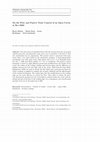
Flow, Turbulence and Combustion, 2021
The interaction of turbulent flows with the external structure of ground vehicles generates uncom... more The interaction of turbulent flows with the external structure of ground vehicles generates uncomfortable noise and a lot of attention is devoted to find new mechanisms for its suppression. The present work is concerned with open cavity flows, very often found in the automotive industry. A three-dimensional rectangular very wide open cavity with aspect ratio $$L/D=4$$ L / D = 4 at Reynolds number $$Re_D=5000$$ R e D = 5000 and Mach number $$M=0.1$$ M = 0.1 is considered. The passive control technique is based on eight different geometrical modifications: the length of the cavity, the radius of the trailing, leading and bottom edges and the difference in heights between the left and right wall of the cavity. Wall-resolved Large Eddy Simulations (LES) are used to obtain the flow fields and a post-process based on Curle’s analogy is applied to evaluate the acoustic radiation and the effectiveness of the control mechanisms. The results show that the modifications on the trailing edge ar...

In this work, the formation and role of a centrifugal instability in the VIV phenomenon at modera... more In this work, the formation and role of a centrifugal instability in the VIV phenomenon at moderate Reynolds numbers are investigated for the ?rst time. Large eddy simulations of a low mass ratio (m = 2.6) two-degree-of-freedom circular cylinder at subcritical Reynolds (Re = 3900, 5300, 11000, 50000) numbers andatzerodamping(? = 0)havebeenperformed. Results for three different values of the reduced velocity U* = 4.3, 5.5 and 6.5 at Re = 5300 are shown. This valuesof thereduced velocitymark thebeginning, the middleandtheendofthestablepartofthesuper-upper (SU) branch. Results show that the xy oscillations trigger a centrifugal instability at the cylinder boundary layer. G¨ortler-like vortices appear at U* ˜ 4.5 with Ay/D ˜ 0.902 and Ax/D = 0.156 when there is an important change in the slope of the increment of the maximum amplitude trend as a function of the reduced velocity. The G¨ortler like vortices become irregular as the reduced velocity increases and cease at thesuper-upperlowe...
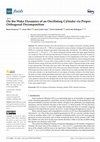
Fluids
The coherent structures and wake dynamics of a two-degree-of-freedom vibrating cylinder with a lo... more The coherent structures and wake dynamics of a two-degree-of-freedom vibrating cylinder with a low mass ratio at Re=5300 are investigated by means of proper orthogonal decomposition (POD) of a numerical database generated using large-eddy simulations. Two different reduced velocities of U*=3.0 and U*=5.5, which correspond with the initial and super-upper branches, are considered. This is the first time that this kind of analysis is performed in this kind of system in order to understand the role of large coherent motions on the amplification of the forces. In both branches of response, almost 1000 non-correlated in-time velocity fields have been decomposed using the snapshot method. It is seen that a large number of modes is required to represent 95% of the turbulent kinetic energy of the flow, but the first two modes contain a large percentage of the energy as they represent the wake large-scale vortex tubes. The energy dispersion of the high-order modes is attributed to the cylind...

An air curtain is basically a plane air jet which acts as an ambient separator [1]. A good design... more An air curtain is basically a plane air jet which acts as an ambient separator [1]. A good design provides a homogeneous unidirectional flow, with low levels of turbulence and high enough mean velocity values. An air curtain with these characteristics has a high thermal efficiency. In the present study, the main objective is to modify the current plenum design of a commercial air curtain in order to increase its thermal efficiency. Due to their excessive cost, the construction and experimental evaluation of such systems is not recommended in the first stages of the design process. In addition, the particular and sometimes unique behaviour and intricate geometry of some systems makes it difficult to predict the accurately their working conditions. The CFD is an excellent tool to evaluate the performance of different designs of plenums. Currently, the employment of paral- lel supercomputers allows to execute calculations with advance turbulence models, like large eddy simulation, not ...
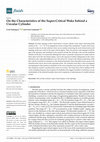
Fluids, 2021
The flow topology of the wake behind a circular cylinder at the super-critical Reynolds number of... more The flow topology of the wake behind a circular cylinder at the super-critical Reynolds number of Re=7.2×105 is investigated by means of large eddy simulations. In spite of the many research works on circular cylinders, there are no studies concerning the main characteristics and topology of the near wake in the super-critical regime. Thus, the present work attempts to fill the gap in the literature and contribute to the analysis of both the unsteady wake and the turbulent statistics of the flow. It is found that although the wake is symmetric and preserves similar traits to those observed in the sub-critical regime, such as the typical two-lobed configuration in the vortex formation zone, important differences are also observed. Owing to the delayed separation of the flow and the transition to turbulence in the attached boundary layer, Reynolds stresses peak in the detached shear layers close to the separation point. The unsteady mean flow is also investigated, and topological crit...
Flow, Turbulence and Combustion, 2020
Ivette Rodriguez et al. in a significant part of the airfoil chord. As a consequence, airfoil aer... more Ivette Rodriguez et al. in a significant part of the airfoil chord. As a consequence, airfoil aerodynamic efficiency increases by a 124% with a reduction of the drag coefficient about 46%. This kind of technique seems to be promising at delaying flow separation and its associated losses when the angle of attack increases beyond the maximum lift for the baseline case.
Computers & Fluids, 2018
Portal del coneixement obert de la UPC http://upcommons.upc.edu/e-prints Aquesta és una còpia de ... more Portal del coneixement obert de la UPC http://upcommons.upc.edu/e-prints Aquesta és una còpia de la versió author's final draft d'un article publicat a la revista Computers & Fluids.
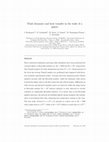
International Journal of Heat and Fluid Flow, 2019
Direct numerical simulation and large-eddy simulation have been performed for a heated sphere at ... more Direct numerical simulation and large-eddy simulation have been performed for a heated sphere at Reynolds numbers of Re " 1000 and Re " 10 4 , respectively. The Prandtl number for both simulations has been P r " 0.7. Measurements of the local and average Nusselt number are performed and compared with literature available experimental results. Average and front stagnation point Nusselt numbers increase with the Reynolds number, while the minimum value moves towards the sphere apex as the flow enters the sub-critical regime. Differences in both viscous and thermal boundary layers are observed, while the shape factor at Reynolds number Re " 10 4 behaves similarly to that observed in circular cylinders at comparable Reynolds numbers. It is shown that as the Reynolds number increases, the increase in turbulent kinetic energy promotes the entrainment of irrotational flow thus enhancing the temperature mixing in the zone. The near wake, between 5 ď x{D ď 15, spreads at a faster rate at Re " 1000 with a slope close to x{D 1{2 , while at Re " 10 4 it follows a trend close to x{D 1{3 .

Computers & Fluids, 2017
The turbulent flow around a circular cylinder has been investigated at using direct numerical sim... more The turbulent flow around a circular cylinder has been investigated at using direct numerical simulations. Low frequency behavior, vortex undulation, vortex splitting, vortex dislocations and three dimensional flow within the wake were found to happen at this flow regime. In order to successfully capture the wake three dimensionality, different span-wise lengths were considered. It was found that a length was enough to capture this behavior, correctly predicting different aspects of the flow such as drag coefficient, Strouhal number and pressure and velocity distributions when compared to experimental values. Two instability mechanisms were found to coexist in the present case study: a global type instability originating in the shear layer, which shows a characteristic frequency, and a convective type instability that seems to be constantly present in the near wake. Characteristics of both types of instabilities are identified and discussed in detail. As suggested by Norberg, a resonance-type effect takes place in the vortex formation region, as the coexistence of both instability mechanisms result in distorted vortex tubes. However, vortex coherence is never lost within the wake.
Proceedings of the EuroSun 2010 Conference, 2010
The transient cooling of a fluid initially at rest, inside a storage tank with an internal gas fl... more The transient cooling of a fluid initially at rest, inside a storage tank with an internal gas flue submitted to heat losses to the ambient is studied. In order to identify the relevant non-dimensional groups that define the transient natural convection phenomena that occur, a non-dimensional analysis is carried out. The long-term behavior of the fluid is modeled by formulating a prediction model based on global balances. The global model together with the proposed correlations have been submitted to a validation process by comparing the results with those obtained from experimental set-up and detailed numerical simulations.
For the numerical resolution of the compressible Navier-Stokes equations (NS) with Finite Volumes... more For the numerical resolution of the compressible Navier-Stokes equations (NS) with Finite Volumes (FV) two main approaches have called the attention of researchers and engineers. First, following the hyperbolic nature of the compressible NS equations, the Godunov-like schemes discretize the numerical fluxes by a characteristic analysis. Second, disregarding the hyperbolicity of the equations, the Kinetic Energy Preserving (KEP) or skew-symmetric discretizations are in accordance with the differential convective and diffusive operators properties.
In the present work, the fluid flow and heat transfer inside an integrated solar collector instal... more In the present work, the fluid flow and heat transfer inside an integrated solar collector installed on an advanced façade are investigated. According to Gray and Giorgini [1], the use of the Boussinesq approximation can be considered valid for variations of thermosphysical properties up to 10 % with respect to the mean value. In the configuration under study, there is a variation of about 20 % in the dynamic viscosity and 15 % in the thermal expansion coefficient. Thus, the main objective of this work is to analyse the validity of the Boussinesq approximation for the turbulent natural convection flow of water in a rectangular parallelepiped tank. The significance of the Boussinesq effects is studied comparatively by means of detailed DNS simulations.

La consulta d'aquesta tesi queda condicionada a l'acceptació de les següents condicions d'ús: La ... more La consulta d'aquesta tesi queda condicionada a l'acceptació de les següents condicions d'ús: La difusió d'aquesta tesi per mitjà del servei TDX (www.tesisenxarxa.net) ha estat autoritzada pels titulars dels drets de propietat intel•lectual únicament per a usos privats emmarcats en activitats d'investigació i docència. No s'autoritza la seva reproducció amb finalitats de lucre ni la seva difusió i posada a disposició des d'un lloc aliè al servei TDX. No s'autoritza la presentació del seu contingut en una finestra o marc aliè a TDX (framing). Aquesta reserva de drets afecta tant al resum de presentació de la tesi com als seus continguts. En la utilització o cita de parts de la tesi és obligat indicar el nom de la persona autora. the heuristics proposed consistently stands out as the best option in all the situations analyzed, which include different geometries and different sizes of the ordinate set. With this algorithm, good scalability results have been achieved regarding both weak and strong speedup tests with up to 2560 CPUs.



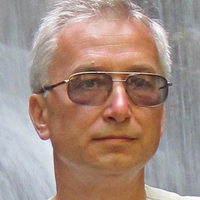







Uploads
Papers by Ivette Rodríguez